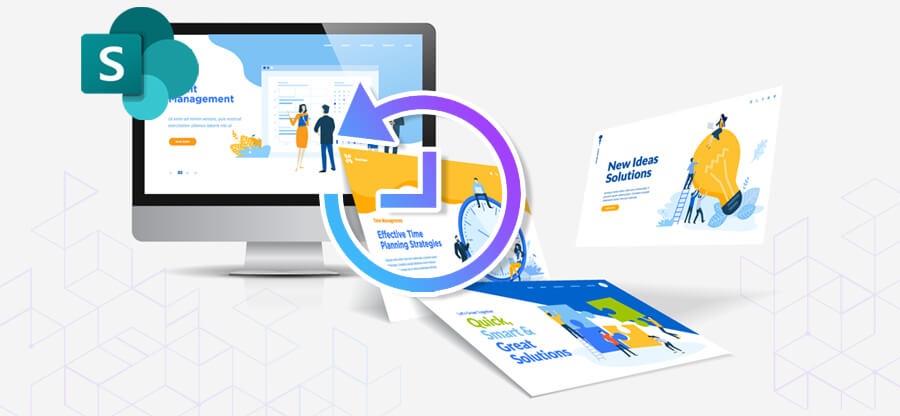Read time: 3 minutes
Microsoft SharePoint is the leader among the Enterprise Content Management solutions. It was developed for managing business data and has been a popular platform since its release in 2001. New features, services, and capabilities were introduced in the recent versions, and both on-premises SharePoint and SharePoint Online have more than 200 million active users.
Each organization works differently and requires flexible content management policies, so the SharePoint Content Management system is accountable for storing, governing, handling, and analyzing documents for internal and external usage. Not only that, but the policies are also scalable to adapt to new requirements and changes in either policy behavior or content management.
How does SharePoint CMS simplify the policy lifecycle?
SharePoint streamlines the complex and massive data into a usable information by creating and improving the policies. For example, suppose the HR department wants to update the recruitment procedure by adding employee verification before offering the candidate the appointment letter. In that case, they can communicate with the SharePoint administrator to change the recruitment policy by adding new steps to it. The changes will be communicated to all employees universally.
The adaptability of the SharePoint platform allows it to follow the business demands, and its customizable features make the task easier too.
Characteristics of SharePoint
We are mentioning some vital characteristics of SharePoint that facilitate the businesses to take control of policy lifecycle and streamline documents conveniently.
- Easy policy creation, data handling, and updates
Policy creation is a primary objective of document management in SharePoint, and it generates, publishes, shares, and distributes all the data regularly. SharePoint works on various file formats like Word, spreadsheets, text files, images, videos, audios, and animations. It offers some dedicated features for creating documents and distributing them:- Content template – A required document can be a newsletter, article, whitepaper, promotional letter, report, etc. The content template feature makes it the job of creating new documents based on pre-designed templates. These are custom templates in which the layout is fixed, and the user has better chances of creating a similar document and updating the older ones.
- Workflows – Workflows ensure that the newer policies are processed and verified quickly. The Power Automate feature creates workflows, and the policy designer can share it with different departments and seek approval. The workflows streamline the entire policy life cycle with greater control from beginning to end.
- Real-time collaboration – All the SharePoint users access the documents simultaneously, and the changes are instantly reflected. The collaboration features reduce the efforts required to finalize the policy.
- Safe document storage – SharePoint architecture has become powerful due to its safe storage space. SharePoint Online uses the Azure storage platform to store site collection, lists & libraries, etc. The sensitive and private information has the least chances of leakage or deletion.
- Limited user access – The document access policy is intended for the legal usage of documents. Only the administrator can create user accounts, and each account has its distinct level of authority to create, view, or update the documents.
- Version control – The version control makes sure that the document is not hampered due to bad overwriting or deletion. With the help of version control, a new version of the document is created after each update. It will contain the name of the user who has made the changes and a timestamp.
The SharePoint content management system adds various benefits to a business without enforcing any strictness or challenges. SharePoint Online is the online version of SharePoint Server. And it connects with other services like OneDrive and MS Teams. The business managers can take advantage of SharePoint and focus on other business functions and decision-making.
Conclusion
Kernel Migration for SharePoint is the migrator software that keeps the policy lifecycle of the content management system intact. When you migrate your site, lists, and libraries to other SharePoint accounts, the SharePoint Migration tool helps you gain satisfactory results in the minimum time. There are various features in each step of migration that lets you transfer the data along with their metadata and user control. It will also migrate the versioning history of each migrated document.








